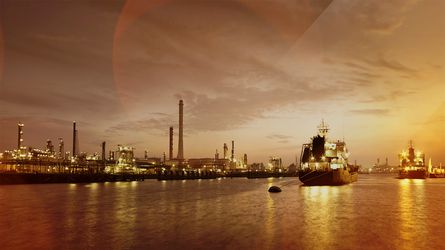
Petrochemicals
LEWA provides durable pumps and metering systems for various processes in the petrochemical industry. Ask our experts for more information!
Read more
The chemical and pharmaceutical industry in particular require systems for separating substance mixtures. The technology and costs associated with this application mean that it is often practical to rely on extraction rather than rectification. This is exactly where the LEWA bellows pulsator comes in.
A pulsating movement drives an extraction column that separates the substance mixture. The bellows pulsator is the perfect system for generating this oscillating liquid movement in a vertical vessel.
The pulsation characteristic exerted by the bellows on the liquid column is a movement that works in almost total harmony. This enables low acceleration forces and, therefore, low compressive stress on the bellows. As a result, the entire system is protected and maintenance times kept to a minimum.
The bellows pulsator is powered with exceptional efficiency thanks to mechanical drive units from the LEWA modular system. We use drive units with either a constant stroke length or continuous stroke length adjustment. A three-phase motor adjusts the stroke frequency.
We guarantee an extremely long service life for our systems: from 8000 to 15000 operating hours. Thanks to a probe monitoring system, we can also prevent loss of production. The bellows pulsator is leakage-free during operation, protecting operating personnel.
A gas cushion-supported pressure equalization system extends the service life of the bellows and minimizes drive energy. This allows you to reduce operating costs by a significant degree, especially at high pulsation volumes and extensive column heights.
The LEWA bellows pulsators use drive units that are put together using the tried-and-tested LEWA modular system. This ensures that exactly the required performance is available for every application. To date, we have implemented a maximum column height of 18 m and pulsating volumes between 200 cm³ and 21 l. These key figures only show the minimum/maximum values engineered so far – column heights and volumes beyond this are still possible.